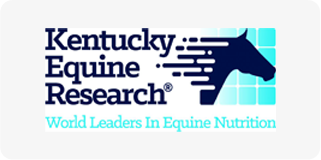Mitigating Equine Fatigue: A Practical Guide with FLAIR® Strips
Jul 11th 2024
Fatigue in Equine Athletes
In the competitive world of equestrian sports, fatigue in horses often goes unnoticed until it impacts their performance. Understanding and addressing this silent challenge is crucial for the health and success of equine athletes. Just as fine-tuning a high-performance engine ensures optimal functionality, managing fatigue ensures that horses can compete at their peak, making every stride and jump count.
Recognizing Fatigue in Horses
Spotting the signs of fatigue in equine performance is as much an art as a science. It involves noticing subtle shifts in energy before they become major concerns. Signs such as slight hesitation at jumps, momentary lack of focus, or decreased enthusiasm for performance serve as early warnings. Fatigue is not merely a temporary dip in energy but a critical depletion of a horse’s physical and mental stamina, leading to an increased risk of injury and significantly impacting performance levels.
By optimizing airflow, reducing respiratory effort, and conserving energy, FLAIR® Strips act as crucial support for the horse's respiratory system. They allow the horse to conserve energy for performance rather than expend it on basic respiratory functions. The Strips are not merely accessories but allies in the quest for optimal equine performance, allowing energy to be utilized efficiently and effectively.
Understanding fatigue in performance horses highlights the importance of early detection and proactive management. Learning to interpret a horse's subtle signs allows for effective adaptation of care strategies, ensuring robust health and success in competition.
Transitioning to Management: Empowering Strategies for Peak Performance
The shift from recognizing to actively managing fatigue is pivotal. Here are key strategies that form the bedrock of effective fatigue management, ensuring that equine athletes remain vibrant and energetic, ready to excel in their performances.
- Optimal Nutrition and Hydration for Horses: Proper nutrition and hydration are foundational for peak performance. A balanced diet enriched with essential nutrients and constant access to fresh water are crucial for horses. Optimal nutrition and hydration significantly boost a horse's energy and recovery capabilities.
- Effective Training and Rest for Equine Performance: A training regimen incorporating sufficient rest is essential. Finding harmony between rigorous training and necessary recuperation is key. A gradual increase in training intensity ensures stamina and strength-building without overburdening the horse.
- Incorporating FLAIR Strips into a horse's regimen directly impacts respiratory efficiency. By supporting the nasal passages, the Strips make breathing less labor-intensive, conserving energy that can be redirected towards performance. This straightforward optimization can improve a horse's stamina and overall performance.
- Monitoring and Adjusting Equine Care: Observation and the readiness to tweak individual care strategies are crucial. This flexibility ensures each horse receives personalized care. Tailoring care to each horse's unique needs helps them thrive on and off the field.
Embracing Recovery: The Final Frontier in Battling Fatigue
Beyond nutrition, training, and innovative tools like FLAIR Strips, recovery is the cornerstone of combating fatigue. Recovery is not merely a pause in training but a proactive strategy that rejuvenates the equine athlete's body and mind, preparing them for future challenges.
- Tailored Recovery Plans for Horses: Each horse is unique, and so should its recovery plan. Customized recovery strategies include structured cooldowns, massage therapy, hydrotherapy, and targeted rest days, each designed to address the horse's needs.
- The Role of Rest in Equine Health: Scheduled rest days promote longevity and vitality. These periods allow for mental and physical recuperation, reinforcing the horse's ability to perform at its best when it matters most.
- Psychological Well-being of Performance Horses: Addressing the mental aspect of recovery is paramount. Incorporating mental stimulation, variety in training, and positive reinforcement helps maintain a high level of mental engagement and reduces the stress that can exacerbate physical fatigue.
- Continuous Learning and Adaptation in Equine Care: Managing fatigue requires ongoing learning, observation, and adaptation. Staying informed about the latest advancements in equine health and performance ensures that strategies for managing fatigue are always evolving.
Supporting Information from FLAIR Strips Research
Research studies have shown that horses using FLAIR Strips conserve 5-6% of energy during intensive exercise by reducing the resistance to airflow. Studies have also shown that the Strips delay onset of fatigue, allowing horses to sustain performance longer which can also reduce the risk of fatigue-related injuries. Whether you're a barrel racer or riding a cross country course, the energy saved and delay in fatigue are beneficial for your horse's optimal performance.
Moreover, FLAIR Strips assist in the post-exercise recovery phase by maintaining efficient oxygen intake during and after exercise. This continuous support through recovery is vital for maintaining peak performance and overall equine health.
The Takeaway
Effectively managing fatigue in performance horses involves combining science, intuition, and a deep respect for the equine spirit. It requires vigilance, compassion, and a commitment to excellence. By adopting a holistic approach to care, embracing innovation, and prioritizing recovery, we can support our horses in their quest for optimal performance and well-being. This path is full of challenges and triumphs, and with the right strategies, we can ensure the well-being of our equine companions.
Visit the Learning section of our website for more detailed information on conserving energy and reducing fatigue in performance horses.





